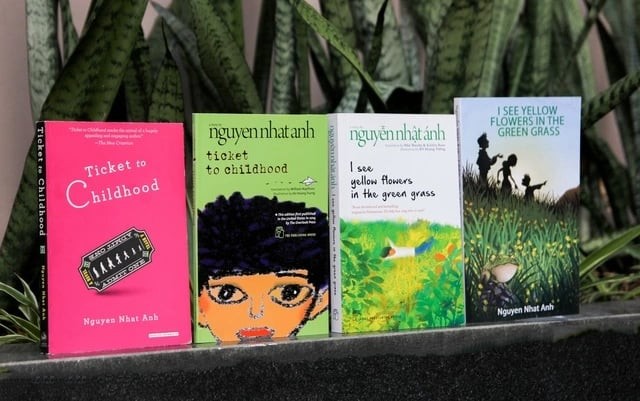Top 7 Best Postmodern Books
Looking through the bookshelves, postmodern literature plays an important part in the development of art and creativity, with their word’s complexion, display of historical and political issues, metafiction, unrealistic plots, and an air of intensity, mystery and suspicion that often keep the readers hooked on every page. Before we get into the 7 best postmodern novels of all time, let’s understand what postmodern literature is.
What is Postmodern Literature?
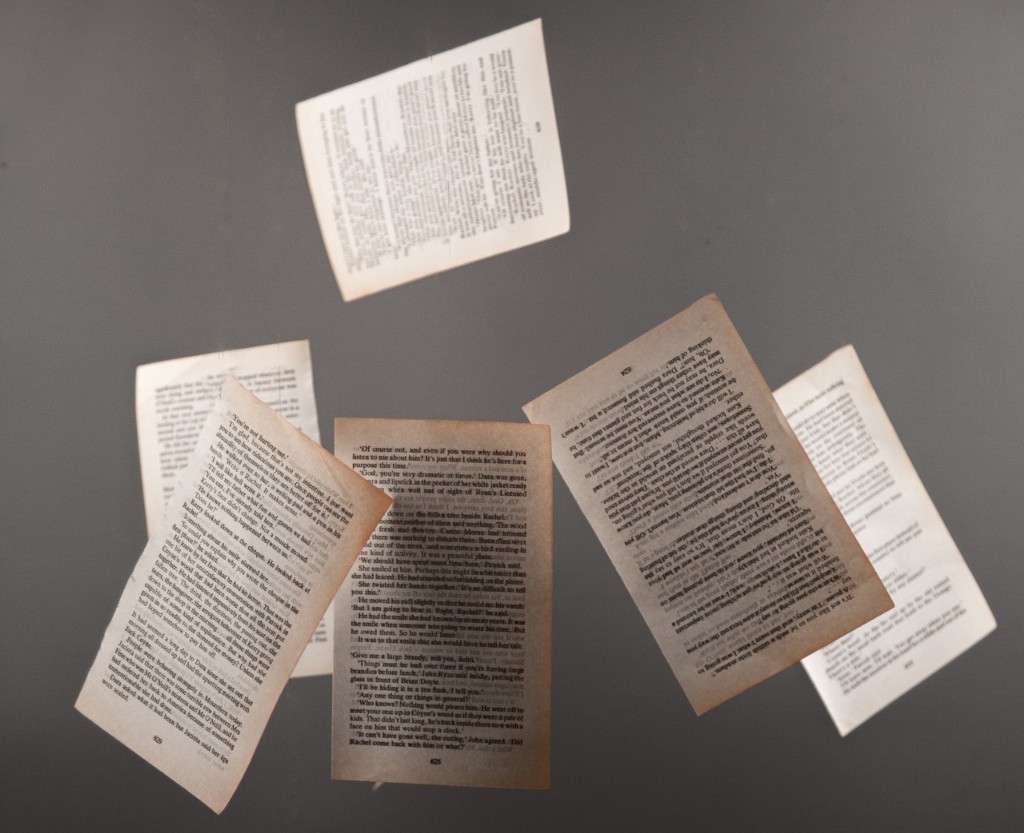 |
| Photo: Electric Literature |
Postmodern literature is a form of literature which is marked, both stylistically and ideologically, by a reliance on such literary conventions as fragmentation, paradox, unreliable narrators, often unrealistic and downright impossible plots, games, parody, paranoia, dark humor and authorial self-reference. Postmodern authors tend to reject outright meanings in their novels, stories and poems, and, instead, highlight and celebrate the possibility of multiple meanings, or a complete lack of meaning, within a single literary work.
Postmodern literature also often rejects the boundaries between 'high' and 'low' forms of art and literature, as well as the distinctions between different genres and forms of writing and storytelling.
Here are some examples of stylistic techniques that are often used in postmodern literature:
• Pastiche: The taking of various ideas from previous writings and literary styles and pasting them together to make new styles.
• Intertextuality: The acknowledgment of previous literary works within another literary work.
• Metafiction: The act of writing about writing or making readers aware of the fictional nature of the very fiction they're reading.
• Temporal Distortion: The use of non-linear timelines and narrative techniques in a story.
• Minimalism: The use of characters and events which are decidedly common and non-exceptional characters.
• Maximalism: Disorganized, lengthy, highly detailed writing.
• Magical Realism: The introduction of impossible or unrealistic events into a narrative that is otherwise realistic.
• Faction: The mixing of actual historical events with fictional events without clearly defining what is factual and what is fictional.
• Reader Involvement: Often through direct address to the reader and the open acknowledgment of the fictional nature of the events being described.
Many critics and scholars find it best to define postmodern literature against the popular literary style that came before it: modernism. In many ways, postmodern literary styles and ideas serve to dispute, reverse, mock and reject the principles of modernist literature.
For example, instead of following the standard modernist literary quest for meaning in a chaotic world, postmodern literature tends to eschew, often playfully, the very possibility of meaning. The postmodern novel, story or poem is often presented as a parody of the modernist literary quest for meaning. Thomas Pynchon's postmodern novel The Crying of Lot 49 is a perfect example of this. In this novel, the protagonist's quest for knowledge and understanding results ultimately in confusion and the lack of any sort of clear understanding of the events that transpired.
Top 10 Best Postmodern Books
1. Slaughterhouse-Five by Kurt Vonnegut
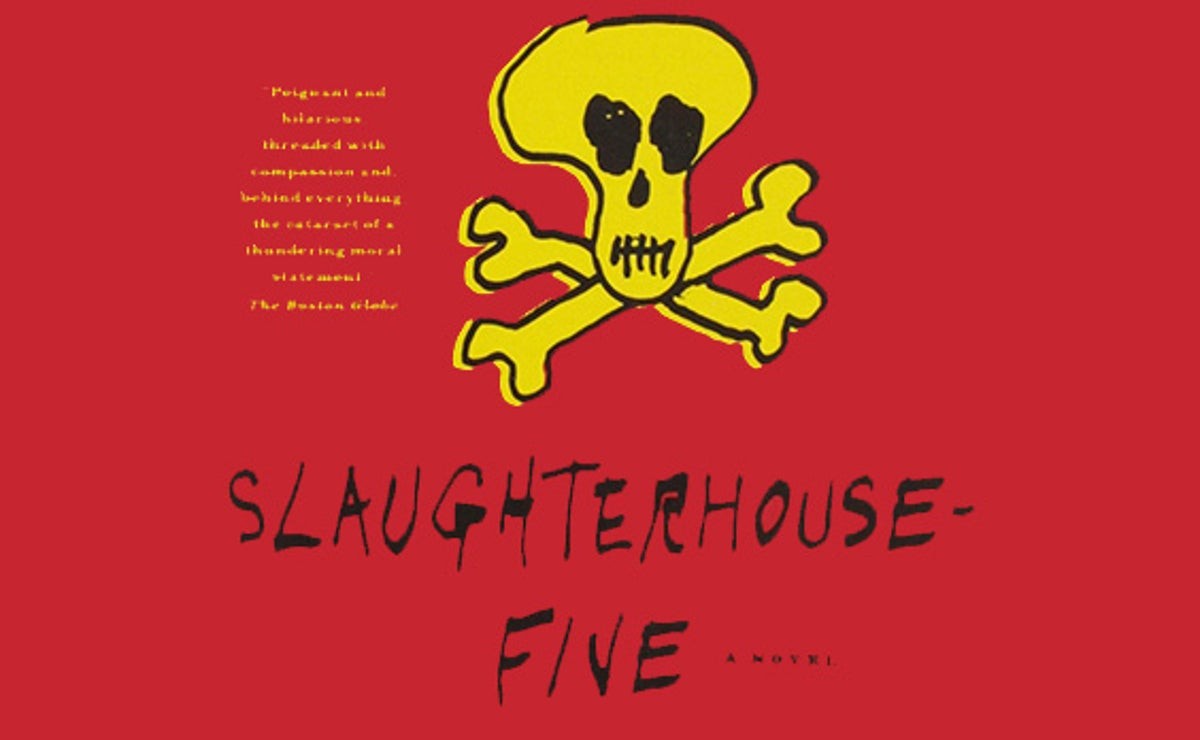 |
| Photo: Independent UK |
Slaughterhouse-Five, or, The Children's Crusade: A Duty-Dance with Death is a science fiction infused anti-war novel by Kurt Vonnegut, first published in 1969. It follows the life and experiences of Billy Pilgrim, from his early years, to his time as an American soldier and chaplain's assistant during World War II, to the post-war years, with Billy occasionally traveling through time. The text centers on Billy's capture by the German Army and his survival of the Allied firebombing of Dresden as a prisoner of war, an experience which Vonnegut himself lived through as an American serviceman. The work has been called an example of "unmatched moral clarity" and "one of the most enduring antiwar novels of all time".
The significance of postmodernism is a reoccurring theme in Kurt Vonnegut's novel. In fact, it is said that post-modernism emerged out of the modernist movement. This idea has appeared on various platforms such as music, art, fashion and film. In Slaughterhouse-Five, Kurt Vonnegut uses postmodernism in order to challenge modernist ideas. This novel is oftentimes referred to as an "anti-war book". Vonnegut uses his personal war knowledge to unmask the real horrors behind closed doors. Postmodernism brings to light the heart-wrenching truth caused by wars. Throughout the years, postmodernists argue that the world is a meaningless place with no universal morals. Everything happens simply by chance.
In Slaughterhouse-Five, Kurt Vonnegut attempts to come to terms with war through the narrator's eyes, Billy Pilgrim. An example within the novel that shows Kurt Vonnegut’s aim to accept his past war experiences is in chapter one when he states that “All this happened, more or less. The war parts, anyway, are pretty much true. One guy I knew really was shot in Dresden for taking a teapot that wasn’t his. Another guy I knew really did threaten to have his personal enemies killed by hired gunmen after the war. And so on. I’ve changed all the names” As the novel continues, it is relevant that the reality is death. Slaughterhouse-Five focuses on human imagination while interrogating the novel's overall theme, which is the catastrophe and impact that war leaves behind.
2. I love Dick by Chris Kraus
 |
| Photo: OUP Blog - Oxford University Press |
A self-described failed filmmaker falls obsessively in love with her theorist-husband's colleague: a manifesto for a new kind of feminism and the power of first-person narration.
In I Love Dick, published in 1997, Chris Kraus, author of Aliens & Anorexia, Torpor, and Video Green, boldly tore away the veil that separates fiction from reality and privacy from self-expression. It's no wonder that I Love Dick instantly elicited violent controversies and attracted a host of passionate admirers. The story is gripping enough: in 1994 a married, failed independent filmmaker, turning forty, falls in love with a well-known theorist and endeavors to seduce him with the help of her husband. But when the theorist refuses to answer her letters, the husband and wife continue the correspondence for each other instead, imagining the fling the wife wishes to have with Dick. What follows is a breathless pursuit that takes the woman across America and away from her husband and far beyond her original infatuation into a discovery of the transformative power of first person narrative. I Love Dick is a manifesto for a new kind of feminist who isn't afraid to burn through her own narcissism in order to assume responsibility for herself and for all the injustice in world and it's a book you won't put down until the author's final, heroic acts of self-revelation and transformation.
3. White Noise by Don DeLillo
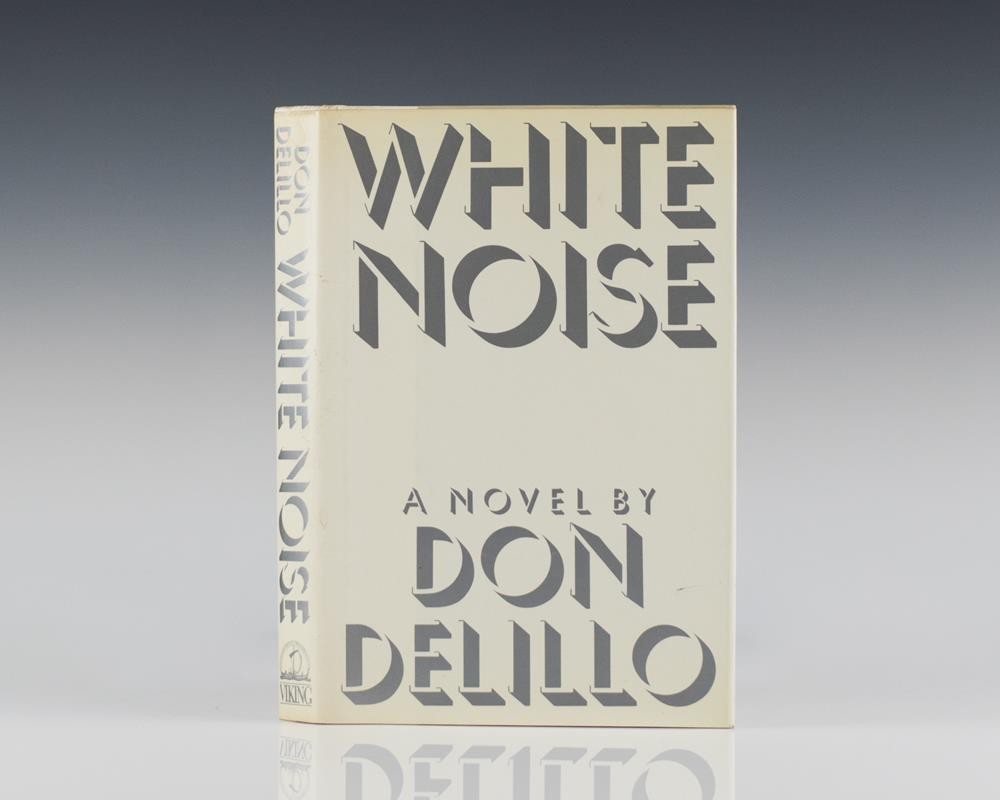 |
| Photo: Raptis Rare Books |
The fiction of Don DeLillo is no longer the well-kept secret of a dedicated following. In such novels as ''Ratner's Star,'' ''Great Jones Street'' and ''The Names,'' Mr. DeLillo has dealt not so much with character as with culture, survival and the subtle, ever-increasing interdependence between the self and the national and world community.
'White Noise,'' his eighth novel, is the story of a college professor and his family whose small Midwestern town is evacuated after an industrial accident. In light of the Union Carbide disaster in India that killed over 2,000 and injured thousands more, ''White Noise'' seemed all the more timely and frightening - precisely because of its totally American concerns, its rendering of a particularly American numbness.
White Noise is written in the first person through the eyes of the main character, Jack Gladney. Jack is middle-aged and overly concerns himself with the inevitability of death. The first-person perspective gives the audience the ability to see Jack’s true thoughts and feelings. The majority of the novel is written in dialogue. Primarily focusing on the interactions between the characters and Jack’s interpretations. Author DeLillo purposefully creates Jack’s dialogue to be philosophical. The diction is not complex, but rather the sentence structure of Jack’s dialogue is complex. Jack’s character’s dialogue throughout the story provides a better meaning than the other characters’.
White Noise explores several themes that emerged during the mid-to-late twentieth century, e.g., rampant consumerism, media saturation, novelty academic intellectualism, underground conspiracies, the disintegration and reintegration of the family, human-made disasters, and the potentially regenerative nature of violence. The novel's style is characterized by a heterogeneity that utilizes "montages of tones, styles, and voices that have the effect of yoking together terror and wild humor as the essential tone of contemporary America".
4. The Satanic Verses by Salman Rushdie
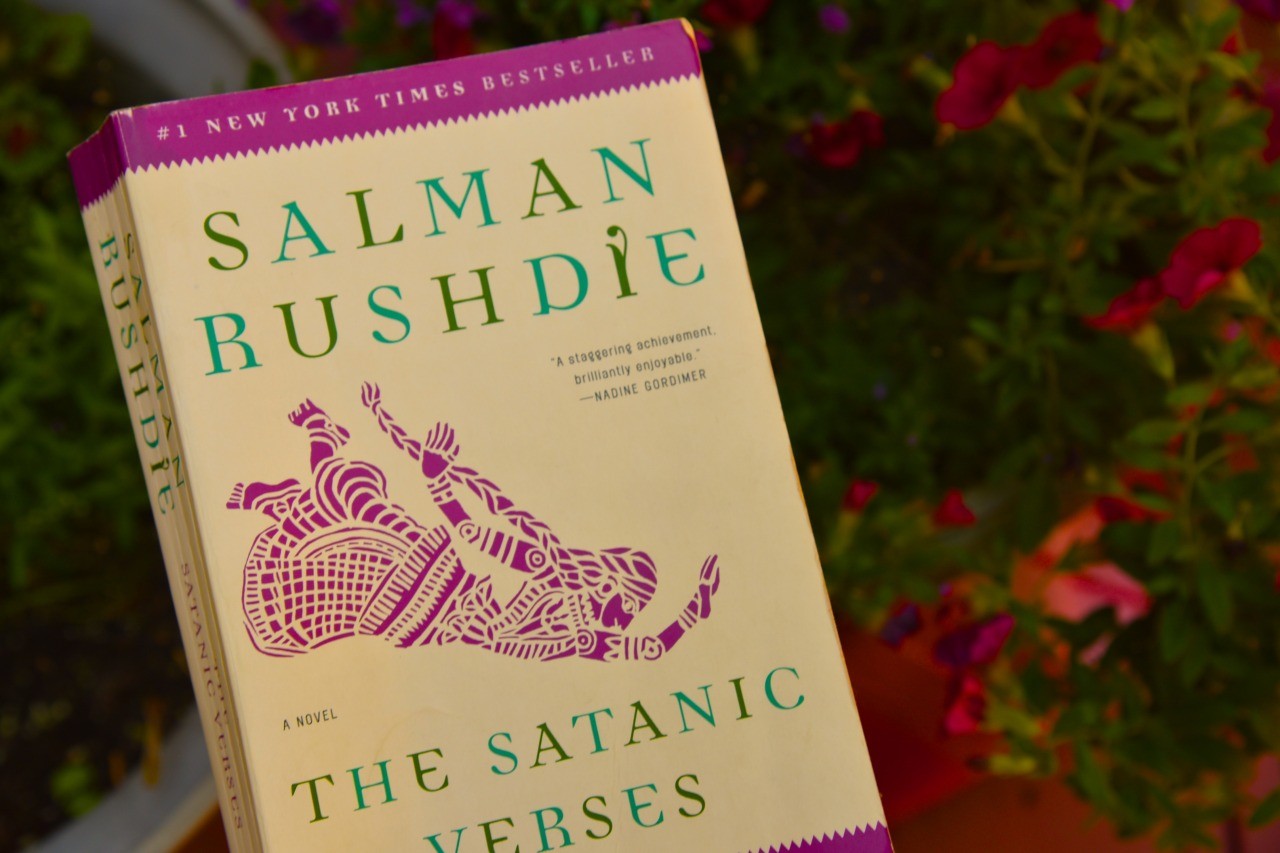 |
| Photo: While Reading and Walking |
The Satanic Verses, magic realist epic novel by British Indian writer Salman Rushdie that upon its publication in 1988 became one of the most controversial books in recent times. Its fanciful and satiric use of Islam struck many Muslims as blasphemous, and Iran’s Ayatollah Ruhollah Khomeini issued a fatwa against the author in 1989, enjoining Muslims to kill not only Rushdie but also his editors and publishers. Violent demonstrations followed in Pakistan; copies of the novel were burned in Britain, where several bookstores were bombed; and the work was banned in several countries.
Rushdie responded to India’s banning of the book by saying that “the book isn’t actually about Islam, but about migration, metamorphosis, divided selves, love, death, London and Bombay.” The thematically complex work earned Rushdie a Whitbread Book Award for novel of the year, and it was short-listed for the Booker Prize, both in 1988. The book was overshadowed, however, by the blasphemy controversy. Rushdie was put under police protection after the issuance of the fatwa, and he spent the better part of the next decade in hiding before the government of Iran declared in 1998 that it no longer sought his death. Rushdie recounted the experience in his 2012 third-person memoir Joseph Anton, which was the alias he used while in hiding.
Overall, the book received favourable reviews from literary critics. In a 2003 volume of criticism of Rushdie's career, the influential critic Harold Bloom named The Satanic Verses "Rushdie's largest aesthetic achievement".
Timothy Brennan called the work "the most ambitious novel yet published to deal with the immigrant experience in Britain" that captures the immigrants' dream-like disorientation and their process of "union-by-hybridization". The book is seen as "fundamentally a study in alienation."
After the Satanic Verses controversy developed, some scholars familiar with the book and the whole of Rushdie's work, like M. D. Fletcher, saw the reaction as ironic. Fletcher wrote "It is perhaps a relevant irony that some of the major expressions of hostility toward Rushdie came from those about whom and (in some sense) for whom he wrote." He said the manifestations of the controversy in Britain "embodied an anger arising in part from the frustrations of the migrant experience and generally reflected failures of multicultural integration, both significant Rushdie themes. Clearly, Rushdie's interests centrally include explorations of how migration heightens one's awareness that perceptions of reality are relative and fragile, and of the nature of religious faith and revelation, not to mention the political manipulation of religion. Rushdie's own assumptions about the importance of literature parallel in the literal value accorded the written word in Islamic tradition to some degree. But Rushdie seems to have assumed that diverse communities and cultures share some degree of common moral ground on the basis of which dialogue can be pieced together, and it is perhaps for this reason that he underestimated the implacable nature of the hostility evoked by The Satanic Verses, even though a major theme of that novel is the dangerous nature of closed, absolutist belief systems.”
5. Cloud Atlas by David Mitchell
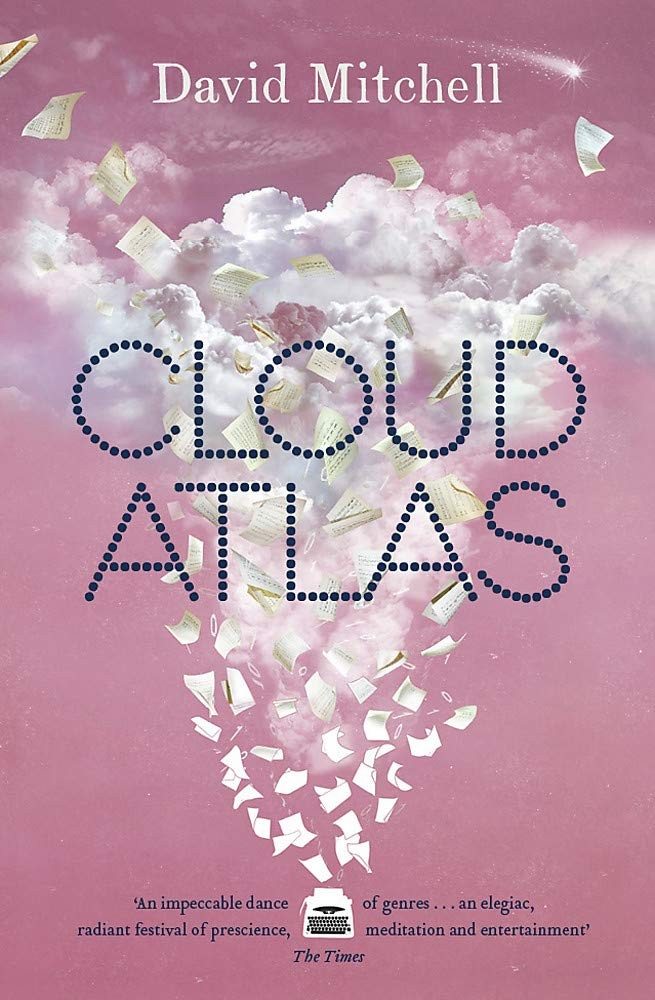 |
| Photo: Amazon UK |
Cloud Atlas is the third novel by British author David Mitchell. It was published in 2004. It won the British Book Awards Literary Fiction award and the Richard & Judy "Book of the Year" award. The year it was published, it was short-listed for the Booker Prize, Nebula Award for Best Novel, and Arthur C. Clarke Award, among other accolades. Unusually, it received awards from both the general literary community and from the speculative fiction community. A film adaptation directed by the Wachowskis and Tom Tykwer, and featuring an ensemble cast, was released in 2012.
Cloud Atlas is a work combining metafiction, historical fiction, contemporary fiction and science fiction. Its text is interconnected nested stories that take the reader from the remote South Pacific in the 19th century to the island of Hawai'i in a distant post-apocalyptic future. The title was inspired by the piece of music of the same name by Japanese composer Toshi Ichiyanagi. The author has said that the book is about reincarnation and the universality of human nature, and the title references a changing landscape (a "cloud") over manifestations of fixed human nature (the "atlas"). It is not a direct reference to a cloud atlas.
The book consists of six nested stories; each is read or observed by a main character of the next, thus they progress in time through the central sixth story. The first five stories are each interrupted at a pivotal moment. After the sixth story, the others are resolved in reverse chronological order. The protagonist of each section reads or observes the chronologically earlier work in the chain.
Cloud Atlas had positive reviews from the majority of critics, who felt that it managed to successfully interweave its six stories. The BBC's Keily Oakes said that although the structure of the book could be challenging for readers, "David Mitchell has taken six wildly different stories ... and melded them into one fantastic and complex work." Kirkus Reviews called the book "sheer storytelling brilliance.”
In 2019, the novel was ranked 9th on The Guardian's list of the 100 best books of the 21st century.
6. V. by Thomas Pynchon
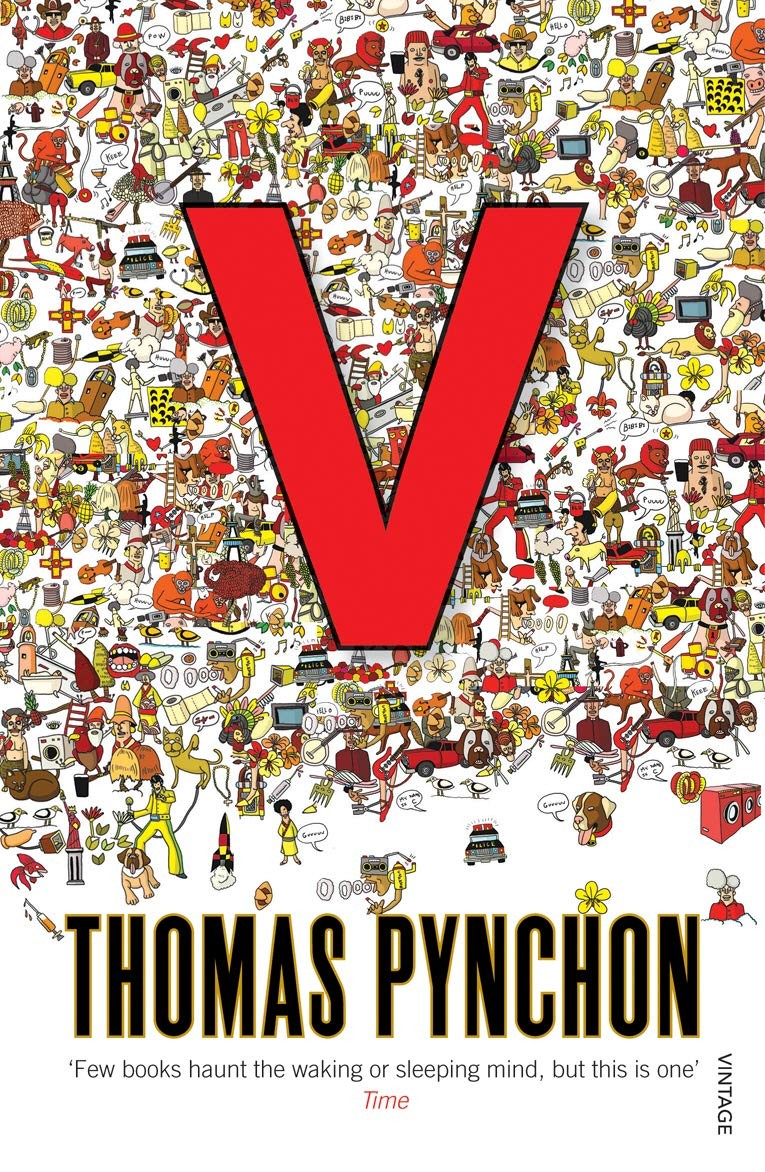 |
| Photo: Amazon |
V. is the debut novel of Thomas Pynchon, published in 1963. It describes the exploits of a discharged U.S. Navy sailor named Benny Profane, his reconnection in New York with a group of pseudo-bohemian artists and hangers-on known as the Whole Sick Crew, and the quest of an aging traveler named Herbert Stencil to identify and locate the mysterious entity he knows only as "V." It was nominated for a National Book Award.
The novel alternates between episodes featuring Benny, Stencil and other members of the Whole Sick Crew (including Profane's sidekick Pig Bodine) in 1956 (with a few minor flashbacks), and a generation-spanning plot that comprises Stencil's attempts to unravel the clues he believes will lead him to "V." (or to the various incarnations thereof). Each of these "Stencilised" chapters is set at a different moment of historical crisis; the framing narrative involving Stencil, "V.", and the journals of Stencil's British spy/diplomat father threads the sequences together. The novel's two storylines increasingly converge in the last chapters (the intersecting lines forming a V-shape, as it were), as Stencil hires Benny to travel with him to Malta.
Time wrote "In this sort of book, there is no total to arrive at. Nothing makes any waking sense. But it makes a powerful, deeply disturbing dream sense. Nothing in the book seems to have been thrown in arbitrarily, merely to confuse, as is the case when inept authors work at illusion. Pynchon appears to be indulging in the fine, pre-Freudian luxury of dreams dreamt for the dreaming. The book sails with majesty through caverns measureless to man. What does it mean? Who, finally, is V.? Few books haunt the waking or the sleeping mind, but this is one. Who, indeed?"
Tony Tanner considered the novel an exploration of the plots individuals ascribe onto the ambivalent universe they have no choice but to confront, during a 20th-century period in which genuine communication between individuals has been eroded and in which ambiguous societal forces are at work (intentionally or inadvertently) towards a state of entropy; "SHROUD asks, 'Has it occurred to you there may be no more standards for crazy or sane, now that it's started?' And Benny answers, 'What, for Christ's sake?' What the 'it' is that has started (if there is an 'it'), what common process links remote imperialist incidents with contemporary automation, tourism, Hitler, and the Whole Sick Crew (if there is any linking common process)—this is what the whole book is about."
7. Catch-22 by Joseph Heller
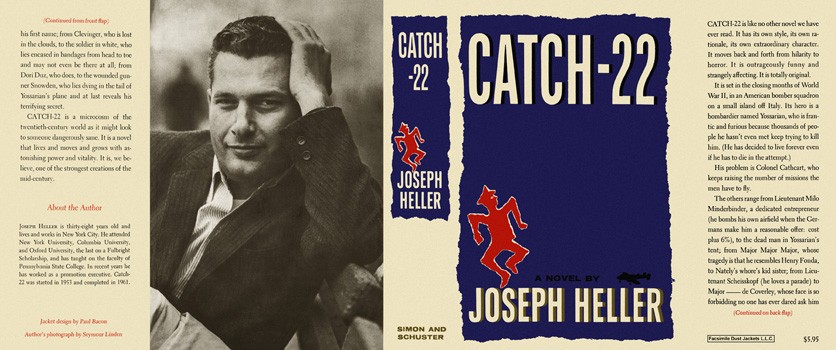 |
| Photo: Facsimile Dust Jackets, LLC |
Catch-22 is a satirical war novel by American author Joseph Heller. He began writing it in 1953; the novel was first published in 1961. Often cited as one of the most significant novels of the twentieth century, it uses a distinctive non-chronological third-person omniscient narration, describing events from the points of view of different characters. The separate storylines are out of sequence so the timeline develops along with the plot.
The novel is set during World War II, from 1942 to 1944. It mainly follows the life of antihero Captain John Yossarian, a U.S. Army Air Forces B-25 bombardier. Most of the events in the book occur while the fictional 256th US Army Air Squadron is based on the island of Pianosa, in the Mediterranean Sea west of Italy, though it also covers episodes from basic training at Lowry Field in Colorado and Air Corps training at Santa Ana Army Air Base in California. The novel examines the absurdity of war and military life through the experiences of Yossarian and his cohorts, who attempt to maintain their sanity while fulfilling their service requirements so that they may return home.
The book was made into a film adaptation in 1970, directed by Mike Nichols. In 1994, Heller published a sequel to the 1961 novel entitled Closing Time.
Many events in the book are repeatedly described from differing points of view, so the reader learns more about each event from each iteration, with the new information often completing a joke, the setup of which was told several chapters previously. The narrative's events are out of sequence, but events are referred to as if the reader is already familiar with them so that the reader must ultimately piece together a timeline of events. Specific words, phrases, and questions are also repeated frequently, generally to comic effect.
Much of Heller's prose in Catch-22 is circular and repetitive, exemplifying in its form the structure of a Catch-22. Circular reasoning is widely used by some characters to justify their actions and opinions. Heller revels in paradox. For example: "The Texan turned out to be good-natured, generous and likable. In three days no one could stand him"; and "The case against Clevinger was open and shut. The only thing missing was something to charge him with." This atmosphere of apparently logical irrationality pervades the book, especially. This style is also recognizable regarding how exactly Clevinger's trial would be executed by Lieutenant Scheisskopf: "As a member of the Action Board, Lieutenant Scheisskopf was one of the judges who would weigh the merits of the case against Clevenger as presented by the prosecutor. Lieutenant Scheisskopf was also the prosecutor. Clevinger had an officer defending him. The officer defending him was Lieutenant Scheisskopf."
While a few characters are most prominent, especially Yossarian and the Chaplain, the majority of named characters are described in detail with fleshed out or multidimensional personas to the extent that there are few if any "minor characters". There are no traditional heroes in the novel, reflecting the underlying commentary that war has no heroes, only victims.
Although its nonchronological structure may at first seem random, Catch-22 is highly structured. It is founded on a structure of free association; ideas run into one another through seemingly random connections. For example, Chapter 1, titled "The Texan", ends with "everybody but the CID man, who had caught a cold from the fighter captain and come down with pneumonia." Chapter 2, titled "Clevinger", begins with "In a way, the CID man was pretty lucky because outside the hospital the war was still going on." The CID man connects the two chapters like a free association bridge and eventually Chapter 2 flows from the CID man to Clevinger through more free association links.
 | Top 7 Best Weekend Getaways for November in US Weekends are for relaxation and getaway trips to enjoy your time away from the crowds and busy life. Check out these 7 best weekend getaways ... |
 | Top 7 Coolest Treehouse Hotels In The World Tree house hotels have been around for a while, and it is an interesting change from normal hotel and stay styles. Take a look at ... |
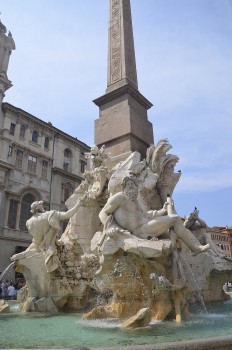 | Top 8 Amazing Places Featuring In Dan Brown’s Novels From the Fountain of the Four Rivers in "Angels and Demons" to Guggenheim Bilbao Museum in "Inferno", these are the wonderful places where Professor Robert ... |
Recommended
 Handbook
Handbook
Vietnam Moves Up 8 Places In World Happiness Index
 Handbook
Handbook
Travelling Vietnam Through French Artist's Children Book
 Multimedia
Multimedia
Vietnamese Turmeric Fish among Best Asian Dishes: TasteAtlas
 Handbook
Handbook
From Lost to Found: German Tourist Thanks Vietnamese Police for Returning His Bag
Popular article
 Handbook
Handbook
Prediction and Resolution for the Disasters of Humanity
 Handbook
Handbook
16 French Films To Be Shown For Free During Tet Holiday In Vietnam
 Handbook
Handbook
Unique Cultural and Religious Activities to Welcome Year of the Snake
 Handbook
Handbook




